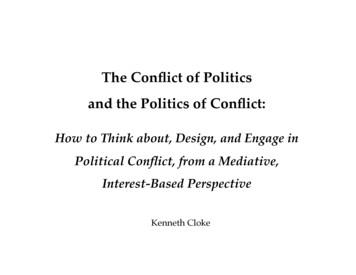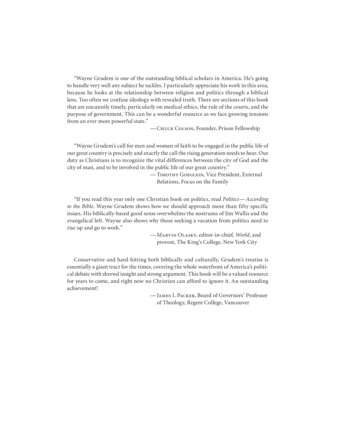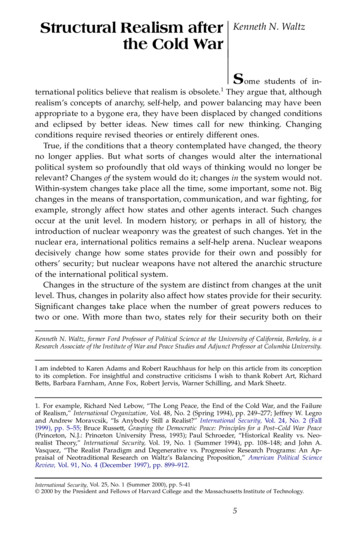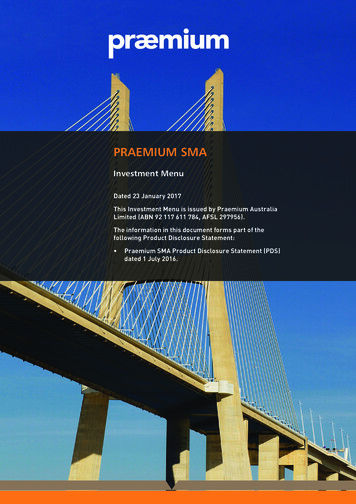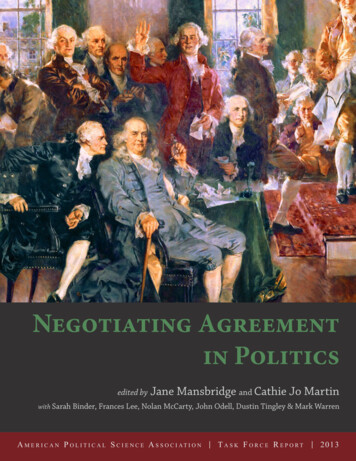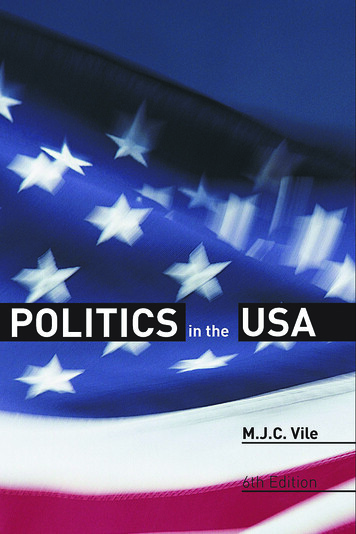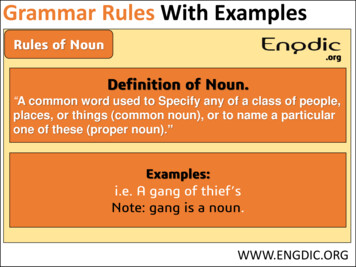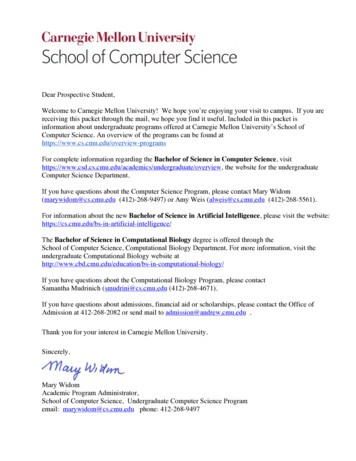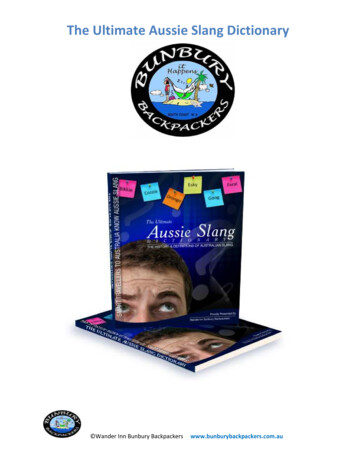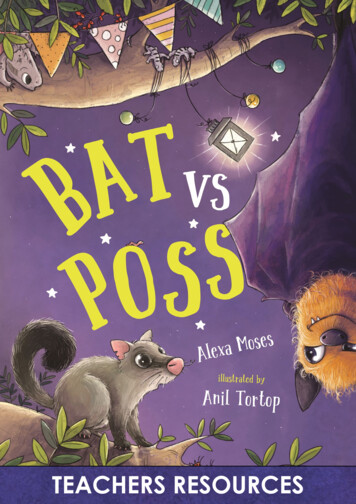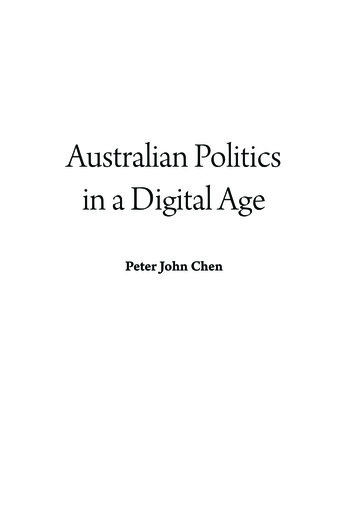
Transcription
Australian Politicsin a Digital AgePeter John Chen
Australian Politicsin a Digital AgePeter John Chen
Published by ANU E PressThe Australian National UniversityCanberra ACT 0200, AustraliaEmail: anuepress@anu.edu.auThis title is also available online at http://epress.anu.edu.auNational Library of Australia Cataloguing-in-Publication entryAuthor:Chen, Peter John.Title:Australian politics in a digital age / Peter John Chen.ISBN:9781922144393 (pbk.) 9781922144409 (ebook)Notes:Includes bibliographical references.Subjects:Information technology--Political aspects--Australia.Information technology--Social aspects--Australia.Internet--Political aspects--Australia.Information society--Social aspects--Australia.Communication--Political aspects--Australia.Dewey Number:303.48330994All rights reserved. Conditions of use of this volume can be viewed at the ANU E Press website.Cover image: Jonathon Chapman, Typographic Papercut Lampshade, http://www.flickr.com/photos/jonathan chapman1986/4004884667Cover design and layout by ANU E PressPrinted by Griffin PressThis edition 2013 ANU E Press
ContentsList of illustrations. . . . . . . . . . . . . . . . . . . . . . . . . . . . . . . . . . viiList of figures. . . . . . . . . . . . . . . . . . . . . . . . . . . . . . . . . . . . . ixList of tables . . . . . . . . . . . . . . . . . . . . . . . . . . . . . . . . . . . . . xiAbout the author. . . . . . . . . . . . . . . . . . . . . . . . . . . . . . . . . . . xiiiAcknowledgements. . . . . . . . . . . . . . . . . . . . . . . . . . . . . . . . . xvAcronyms and jargon. . . . . . . . . . . . . . . . . . . . . . . . . . . . . . . xviiChapter 1 — Contextualising our digital age. . . . . . . . . . . . . . . . . 1Chapter 2 — Obama-o-rama?. . . . . . . . . . . . . . . . . . . . . . . . . . 17Chapter 3 — Social media . . . . . . . . . . . . . . . . . . . . . . . . . . . . 69Chapter 4 — Anti-social media . . . . . . . . . . . . . . . . . . . . . . . . 113Chapter 5 — All your base. . . . . . . . . . . . . . . . . . . . . . . . . . . 135Chapter 6 — Elite digital media and digital media elites . . . . . . . 161Chapter 7 — Policy in an age of information. . . . . . . . . . . . . . . 189Epilogue – An invitation to readers . . . . . . . . . . . . . . . . . . . . . 213References. . . . . . . . . . . . . . . . . . . . . . . . . . . . . . . . . . . . . . 215v
List of illustrationsChapter OneIllustration 1: Extract of Alexander Graham Bell’s sketch of thetelephone (1876)Chapter TwoIllustration 2: Tony Abbott Looking at Things Tumblr blogIllustration 3: The Real Jeff parody websiteIllustration 4: Examples of learning and transfer among politicalpartiesIllustration 5: Opposition leader Tony Abbott responding to theaudience on Q&AChapter ThreeIllustration 6: Twitter conversations: #auspol and #nbn (29 March2012)Illustration 7: Referral to advocacy websiteIllustration 8: Pro-trucking Facebook post, ascii cut and pasteIllustration 9: South Australian Feminist Collective Facebook pageChapter FourIllustration 10: ‘You said it ’ entryIllustration 11: Example of ‘casual racism’ on FacebookIllustration 12: Prime Minister Gillard burnt in effigy, Eureka DawnVigil (3 December 2010)Illustration 13: Comment on opinion piece published in The PunchChapter FiveIllustration 14: Still image from GetUp! election 2010 ‘enrol to vote’ad (5 July 2010)Chapter SixIllustration 15: Story commentary on Twitter regarding the CraigThomson affair (24 May 2012)Illustration 16: Politician–journalist social interactions on TwitterIllustration 17: Personal newspaper drawn from political content,published using paper.liChapter SevenIllustration 18: 2012 Govhack (1 June 4vii
List of figuresChapter OneFigure 1: Weekly hours spent per mediaChapter TwoFigure 2: Citizens’ views of government and democracyFigure 3: Traffic to party websites, May–August 2010Figure 4: Politicians’ Facebook friends/fans in the 2010 federalelectionFigure 5: Politicians’ Twitter followers in the 2010 federal electionFigure 6: Candidates’ website functionality in the 2010 federalelectionFigure 7: Candidates’ use of websites, federal elections 2004, 2007,and 2010Figure 8: Candidates’ perceptions of channel value in electioneering2007Figure 9: Candidates’ ‘points of presence’ online in the 2010 federalelectionFigure 10: Candidates’ use of SNSs, elections 2007 and 2010Figure 11: Depth of content in campaign mini-sites in the 2010federal electionFigure 12: Australians’ interest in election campaignsFigure 13: AES media research ‘Followed the election in the massmedia’Figure 14: Source of web browsing of political contentFigure 15: Mentions of party leaders in blog posts, May–August2010Figure 16: Mentions of party leaders in tweets, July–August 2010Chapter ThreeFigure 17: Age distribution of social-media survey respondents,compared to NFigure 18: Difference between the political engagement of users ofsocial mediaFigure 19: Gross household income, users of political social mediaFigure 20: Highest level of education achieved, users of politicalsocial mediaFigure 21: Political blog users, employment 818285ix
Australian Politics in a Digital AgeFigure 22: Discursive transfer: Political-blog users compared withgeneral usersFigure 23: Political behaviour of blog users, comparativeFigure 24: Political behaviour of Twitter users, comparativeFigure 25: Political behaviour of Facebook usersFigure 26: Propensity to group membership among social mediausersFigure 27: Political content on Facebook wallposts, by typeFigure 28: Stranger on a train scenario, willingness to talkFigure 29: Policy areas of interest to social media usersChapter FiveFigure 30: Reason for joining CANdo, self-reportedFigure 31: CANdo membership, political activityFigure 32: Occupy Sydney participants’ levels of political trust,compared with Australian populationChapter SixFigure 33: Changes in the metro and national newspaper industry,1901–2011Figure 34: Percentage change in newspaper circulation 1977–2012Figure 35: Online news media source, 2010 electionx868792959599102103143143150163163167
List of tablesChapter TwoTable 1: Australians’ use of digital media in the 2010 electionTable 2: YouTube videos posted within 50 days of the 2010 federalelection dateTable 3: Voter engagement by party website in the 2010 federal electionTable 4: Election activityChapter ThreeTable 5: Social media typologyTable 6: Time spent on the internet and political activity, under 30sTable 7: Political use of FacebookChapter FourTable 8: Political social media, response rates by genderTable 9: Stranger on a train scenario, gender differencesChapter FiveTable 10: Mobilisation channelTable 11: Heard about protest via SNS, by age31324958758099124125151151xi
About the authorPeter John Chen is a lecturer in media and politics at the University of Sydney.He holds a PhD from The Australian National University. His research focuseson the relationship between media and political processes, with a particularinterest in new forms of communication. He also teaches and researches in theareas of public policy, Australian politics and social movements.Peter is the author of numerous articles and chapters on the role of digital mediain Australian political life, and the author of Electronic Engagement: A Guide forPublic Managers (ANU E Press, 2007) and the co-author of Electronic Democracy?The Impact of New Communications Technologies on Australian Democracy(Democratic Audit of Australia, 2006). He is a member of the editorial boards ofthe Journal of Information Technology & Politics and the International Journal ofElectronic Governance.Photo courtesy of the University of Sydneyxiii
AcknowledgementsI would like to thank my research collaborators over the years: Dr Stewart JacksonDr Jay Smith, Dr Lucas Walsh and Dr Ariadne Vromen. In addition, I’m indebtedto the consistent, reliable and high quality work of my research assistant EliseWood, the red pen of Anna Bardsley and the editorial assistance of Sam Vincent.Finally, I’d like to acknowledge the kind and useful comments of my reviewers,the Australian and New Zealand School of Government and ANU E Press for thepublication of this book, supporting my choice of an open-licensing approachpermitting derivative works.For Jo.xv
Acronyms and MSCSGDDOSEBPe-democracyFOIAGov alian Associated PressAustralian Broadcasting CorporationAustralian Bureau of StatisticsAustralian Communications and MediaAuthorityAustralian Electoral CommissionAustralian Labor PartyAustralia and New Zealand School ofGovernmentapplication programming interfaceAmerican Standard Code for InformationInterchange (character encoding)Australian Taxpayers’ AllianceAustralian Women in AgricultureBritish Broadcasting Corporationcontent-management system (software)coal seam gasdistributed denial-of-serviceevidence-based policyelectronic democracyFreedom of Information ActGovernment 2.0high fidelityinformation and communications technologykeep it simple, stupidLow Orbit Ion Cannon (software)massively multiplayer online game (software)member of parliamentNational Broadband Networknon-government organisationnew public managementnot safe for worknew social movementOrganisation for Economic Co-operation andDevelopmentxvii
Australian Politics in a Digital OLSOPUGCUSBWWWYRaWxviiionline social movement organisationopen-source software (licensing model)political big brother (website)public relationsPublic Relations Institute of Australiapublic sector informationQuestion and Answer (television show)rolling on floor laughing my fucking ass offResource Super Profits Taxreally simple syndication (web format)social movement organisationshort messaging service (text messaging)social networking serviceSenator Online (party)standard operating procedureuser-generated contentuniversal serial bus (hardware)World Wide WebYour Rights at Work
Chapter 1 — Contextualising ourdigital ageIt becomes normal, if you do it enough. Everything does.— Dr Philip Myman, ‘Pilot’, Better off Ted (Fresco, 2009, s01e01)The Australian media landscapeDigital media has been increasingly making a mark on the practice of politicsin Australia. In the days before the 2010 federal election, ‘progressive’ onlinepublic interest advocacy group GetUp! took a legal challenge to the AustralianHigh Court. Based on concerns of its members that reforms to electoralenrolment laws made under the previous Coalition government had unfairlydisenfranchised younger Australians in 2006, the group mobilised legal resourcesand supporters to successfully change the law. Similarly, the organisation forcedthe Australian Electoral Commission (AEC) to accept online enrolment, settingup an online system to aid in the registration of voters — a direct interventionin the management of elections (Hopewell, 2010). This group, which had formedonly five years previously, suddenly became a significant voice in Australianelectoral politics. GetUp! moved from a focus on media campaigns to actionswhich directly altered Australian electoral law, the operations of the AEC, andthe electoral balance in a year that was marked by a knife-edge electoral contest.The 2007 election was also marked by its use of digital media, this time fromwithin the world of formal politics. Then Opposition leader, Kevin Rudd, wasplaced front and centre of a campaign employing a slick presidential-stylewebsite, and strong use of social networking services (SNS) and online video(Chen and Walsh, 2010). This marked the beginnings of political campaigningin Australia that employed direct video and ‘social media’ to target supportersand key groups, moving party campaigns further away from the mass-mediastrategies that dominated political campaigns since the 1960s. Additionally, thisuse of technology had other meanings for the electorate. Rudd’s use of digitalmedia emphasised his ‘newness’: not just a change of government, after a longperiod under Prime Minister John Howard, but a generational change from aman associated with talkback radio and television, to Rudd and his emphasis oninformation technology and the internet.At the grassroots level we have also seen the way a range of applications of theinternet have affected the political world. Increasingly Australians are accessingonline media as a source of political information. This continues a process of the1
Australian Politics in a Digital Age‘mediation’ of politics: the tendency for the media to become pre-eminent inlinking people and institutions in the modern political environment. This is not,however, simply a passive process of ‘more TV politics’. People are empoweredby the interactive nature of the technology to be more politically expressive inonline forums, SNS and blogs. Political memes — viral ideas — move rapidlythrough a globalising online community. The speed of contemporary politicscan be remarkable. A paternalistic and patriarchal comment by a Canadianpolice officer1 in late January 2011 spurred a colourful protest in downtownToronto in late April (BBC, 2011). By early May, similar ‘slutwalks’ were beingundertaken in Melbourne (Craig, 2011) as a new generation of young womenidentify that the personal is political and attempt to reclaim words that controland interpellate women. The rapid movement of ideas and culture serves as anew reservoir for the knowledge and traditions of social movements outside oftheir organisational contexts.We’ve also seen a debate about the future of our media landscape, with the‘Princes of Print’2 — newspaper barons — under assault by the upstartnew media. Draining off the ‘rivers of gold’ that once flowed from classifiedadvertising and introducing increased competition for the advertising dollar,the internet attacks the economic base of mass-media production: the scarcityof communications that is associated with the cost of plant and equipment.At the same time, new and alternative forms of publication compete for theattention of audiences. This impacts the stable diet of most Australians’ mediaconsumption, with implications for the sustainability of high-cost content likenews and investigative journalism. On the other side of the ledger, we have seenalternative experiments in new forms of journalism: non-profit publication, thecrowd sourcing of stories and content, and citizen journalism have all begun tomake claims for legitimacy and political significance in today’s complex medialandscape (Deitz, 2010). These new voices challenge established institutionalloci of power to define what is newsworthy, and the interpretation of politicalevents and issues.On digital mediaThis is not a technical book. It uses the term ‘digital media’, however, to describethe increasingly complex and interconnected set of technologies that have beenreshaping the media landscape over the last few decades. The term has beendeliberately selected over other competing ones (e.g. ‘new media’) because of itsfocus on the key technical driver of change: the digitisation of media content.1 ‘I’ve been told I’m not supposed to say this — however, women should avoid dressing like sluts in ordernot to be victimised’ (cited in Pilkington, 2011).2 A term used by former prime minister Paul Keating (1986) to describe the regulation of media ownership(Guthrie, 2011: 37).2
Chapter 1 — Contextualising our digital ageDigitisation (the conversion of content from analog to computer-readableformats) is significant because it allows for increased communicative capacity(bandwidth), higher fidelity, and the ability to easily integrate content intocomputer networks (interoperability) such as the internet. This has powerfulimplications for the reach of information and the way information processing(data storage and analysis) is applied to ‘ordinary’ communication activities.A good example of this is the remoulding of content channels into the‘social media’. Social media is defined as by Axel Bruns and Mark Bahnischas ‘technologies to provide space for in-depth social interaction, communityformation, and the tackling of collaborative projects’ (2009: 1). Social media is asubset of digital media that adds database capacity to communication to record andrepresent the social relationship between participants. In doing so, technologieslike Facebook, Twitter and blogs are able to enhance communication withinsocial groups: either through re-creating offline social networks (i.e. universitymates) or generating new communities of interest (i.e. Furry fans) (Boyd andEllison, 2007). Like ‘old media’ these systems allow for communication, but theaddition of computerisation and networking technologies enhances the waythat particular individuals and groups can be identified and brought together.Thus, these technologies enhance ‘discoverability’ and ‘social cohesion’ throughautomation. This changes our basic relationship with media from passiverecipient to active engagement.While the idea of ‘convergence’ sees a future where all digital media is containedon an internet-enabled system, to date, digitisation has produced a hybrid mediasystem that is gradually taking previously specific-purpose technologies andturning them into devices with a wide range of applications. The most visibleexamples of this have been in the way computers (once glorified typewritersand calculators) are now entertainment and communication systems, and howtelephones have got smart and morphed into minicomputers. Importantly,convergence is not simply a technical process, but can also be seen in the waythat digital media that remain offline (not connected to an open interoperablecomputer network) get ‘overlayed’ by social media through the creation of onlinecommunities around these channels (such as the use of Twitter hashtags forparticular television shows or the sharing of static content pages through SNSs).Thus, the emphasis of this book is on that part of the digital media environmentthat is being drawn into the networked environment of the internet, eitherdirectly through technical means, or indirectly through the social media.Non-linear, multi-factoral implicationsEach of the vignettes above is dissimilar in their scope, scale and implications.Change comes from a variety of sources (individuals, organisations, economic3
Australian Politics in a Digital Agesignals, cultural production and meaning-making). Because of the considerablydiffused (or alternatively, ubiquitous) impacts that digital media have hadon Australian political life, it is easy to discount the importance of digitaltechnologies in this nation. This ‘normalisation hypothesis’ — that socialfactors and tradition bring new technological developments into alignmentwith existing power distributions and patterns of social action (Resnick, 1999)— is widely accepted as the dominant description of the way digital mediahas been diffused in Australian society. The argument rests on the premise thattechnologies may be catalytic for change, but this is shaped and moderated byexisting power structures and norms.Because of this, the study of new types of media within the discipline ofAustralian politics has not been a growth area, attracting modest levels ofattention when compared with that seen in comparative nations. While the medialandscape has undergone dramatic and radical successive reconfigurations overthe last two decades as a result of the rise of digital technologies, a tendencyin the academy has been to see the political implications of this technologicalreconfiguration as comparatively small. Initial ‘hype’ about the potential fordigital media to bring about ‘electronic democracy’ (e-democracy) at the turnof the century did not result in a fundamental alteration in the institutional orindividual political practices of Australians, and more recent moves towards‘Government 2.0’ has not produced much scholarly interest by researchers inpolitics or public policy. Similarly, while a digital media pioneer in its earlystages (through the use of digital media, but also in the development of policiesaimed at increasing high-speed internet uptake in Australia), the Rudd Laborgovernment quickly floundered in a quagmire of over-reaching reforms, withRudd’s use of microblogging-cum-instant messaging3 service Twitter painted assymbolic of a man out of touch with ordinary Australia (Maiden, 2010).This is unfortunate. Dramatic claims about the power of digital media technologiesto revitalise political participation and practice have, largely, been unrealised inAustralia. The massively expanding media environment of Australians has, andwill have, however, an important impact on political practice. This viewpointcomes from the observation that citizens of developed nations are increasinglyembedded in an environment that is shaped and defined by media. Changesto this environment’s contours, content and actors, therefore, have impacts onthe shape and nature of the political world. We take our existing expectations,beliefs, and practices with us into this new environment. Thus, there will becontinuity, but continuity with change. Overall, therefore, what we see is a3 I recognise the definitional ambiguity here. Following Goggin and Crawford (2010) we have to recognisethat definition of new media by the technical characteristics of the specific channel/tool is problematic. Theincreasingly active way that users/audiences employ technologies make static definitions of questionablevalue. This is particularly the case where there are considerable intergenerational differences in the waymedia channels are used.4
Chapter 1 — Contextualising our digital ageset of very complex and non-linear changes that have resulted from the rise ofdigital media (Castells, 2000: 74). Far from being technologically deterministicin nature, these changes stem from the altered social world in which we live: asactive agents who use media as instrumental tools for action, but also as carriersof culture.The nature of continuity and change in Australian digital politics is what thisbook explores.Media thinking: Is anything really ‘new’ here?One of the longstanding central concerns of the study of ‘political communication’(the largely North American individualistic formulation focusing on politicalcandidates) or ‘media politics’ (the more British and Australian transition, withemphasis on organisational power), is the impact that media has on politicallife (Goot, 2009: 174–75). Media in these two traditions are either seen astechnologies and practices that serve as modifiers of human communication atone level of analysis, or as a set of formal social institutions with key democratic‘functions’. We have long accepted that media form an increasingly importantpart of political practice around the world: through the extended capacity ofindividuals to know about and participate in political events outside of theirimmediate physical environment, and as political actors in their own right.The rise of national media reflects the rise of the nation state itself, and thegradual shift to the centre, in nations like Australia, of power and authority.In addition, effective national communication systems are essential for theoperation of contemporary bureaucracies, and it is possible to see politicalsystems as not just systems for the distribution and use of power, but also asinformation systems: ‘a collection of elements (people, hardware, software, anddata) and procedures that interact to generate information needed by users inan organization’ (Morley and Parker, 2009: 499).The structure of power shapes the behaviour and responses of those who livewithin its sphere. An increasingly mediated politics thus requires individualswho have ‘media literacies’. These literacies are what Pierre Bourdieu (1973)would call symbolic and cultural ‘capital’: not just skills, but also knowledgeof the genre conventions and lingo of the communities in which they need tooperate. This capital creates meaning in any particular area of human activity:art, sport, consumption and politics (Harker, et al., 1990: 8, 13). Without theability to ‘read’ and value symbols and behaviours, there would be no culturalsystem that creates power relations beyond the raw exercise of individualviolence. Politicians, in their special field of mediatised politics, see media as bothavenues to communicate to a variety of political constituencies and organisations5
Australian Politics in a Digital Ageto be courted and controlled. Thus, the skills of the effective leader today liein maintaining their party or organisational support base, developing effectivepublic policy (which may or may not be ‘good policy’ as we’ll see in Chapter 7),and being an effective media ‘performer’ (Louw, 2010). In addition, as politics inAustralia is a quasi-competitive sport, the ability to innovate in the use of media(and particularly new forms of media), may provide competitive advantage tosome individuals and organisations, encouraging the development of mediatedpolitical practices that evolve and change as the media landscape changes.The key question we have to ask, therefore, concerns the key characteristics(technical, social and political) of digital media that observers of politics needto focus upon to make meaningful assessments of recent political behaviour inAustralia, and the trajectory of political practice into the future.Thinking about ‘media’: From technical to social modelsBefore discussing digital media, we need to think about what we mean by ‘media’,both as a general definition, and in comparison with current developments.Marshall McLuhan oriented us to the need to pay attention to technologiesso naturalised or domesticated that we fail to fully consider their implicationsand effects. He chided the complacent with the observation that ‘ fish knowexactly nothing is water, since they have no anti-environment which wouldenable them to perceive the element they live in’ (McLuhan and Fiore,1968).We live in a media-saturated world and, thus need to reflect on our culturalmedium.There are many ways to look at ‘media’. A traditional and technical view hastended to see media as a modifier for human speech communication — somethingwe’ve developed to enhance our capabilities in the same way a club expandedour capacity to kill through increasing the effective strength and reach of ourarm. A good example of this is the common communication models that lookat media as a transmitter of information at a distance or over time, where theoptimal design is the one which reduces the likelihood of corruption or decay(through, for example, ‘redundancy’), or degradation (it has ‘high fidelity’(hi-fi) and introduces low levels of ‘noise’ to the signal) (Shannon, 1948). Inthese models of communication, such as the basic design of the Bell’s telephone(see Illustration 1), there tends to be a focus on a very simple view of humancommunication: such as the conversion (encoding) of sound into electoralimpulses and their reproduction (decoding) at a distance. These models havetended to dominate the views on media during most of the 20th century, witha resulting tendency to see mediated communication as a process focused onproduction and transportation, rather than on reception and interpretation. Inaddition, these models privilege speech and face-to-face communication as more6
Chapter 1 — Contextualising our digital age‘authentic’ and natural forms of communication, an assumption we’ll see hasimplications for power and authority, as well as the methodologies employed toevaluate media power.Illustration 1: Extract of Alexander Graham Bell’s sketch of the telephone(1876)Source: Library of Congress, Manuscript DivisionWhile the idea that the communicative world we inhabited was ‘naturally’dominated by face-to-face communication may have been true of Bell’s time,since the advent of, first, widespread literacy and, then, broadcast media,Australians have been increasingly engaged in their social world through avariety of communications technology. Until the late 1990s these technologiestended to be defined by scarcity: either the economic scarcity of publicationand mass circulation (which limited the number of newspapers, for example), orthe scarcity of electromagnetic spectrum and the limited number of frequenciesavailable for analogue radio and television broadcasting. This placed a smallnumber of individuals — the media barons — at the apex of organisations thatcontrolled these media organisations, a position that conveyed both status andpolitical influence.The advent of digital technology and computer networking (radicallydecentralising the production, storage and distribution of content) has hada dramatic impact on scarcity. No longer are we subject to the economics ofspectrum availability as the boundaries of our media consumption; today,it’s the number of waking hours that limits the time Australians spend inmediated communications of some form or other. This is illustrated in Figure7
Australian Politics in a Digital Age1. Demonstrating Australians’ hourly consumption per week of different mediaforms, it shows us a number of things: first, that the type of media needed tobe studied continues to expand, as the array of consumer media products andmedia expands.In addition, the way that we might think about characterising media audiences— say for political segmentation p
Figure 32: Occupy Sydney participants' levels of political trust, compared with Australian population 150 Chapter Six Figure 33: Changes in the metro and national newspaper industry, 1901-2011 163 Figure 34: Percentage change in newspaper circulation 1977-2012 163 Figure 35: Online news media source, 2010 election 167
